Photographer Melissa Schriek on Female Friendship and the Privilege of Boredom
By Upasana Das“I have a lot of photos with chins touching,” said Melissa Schriek over the phone from her Amsterdam home. We were going through some of the photographs from her last book, Ode: an exploration of the dynamics of female friendship. “I like that it’s almost a mouth,” she said, “It’s also very intimate when your chins are touching, because it’s so close to the lips. It becomes quite exciting because of that.” Fresh off her solo booth at the Unseen Photography Fair and winning the Meijburg Art Commission last year, I had caught the photographer earlier this month in between scanning images for her upcoming book from her time in Tokyo. When we spoke in late 2023 for a magazine commission, she had just returned from Japan and started the scanning. “That’s how long it takes me to finish works,” she laughed, “Because I need time to step away from the work.”
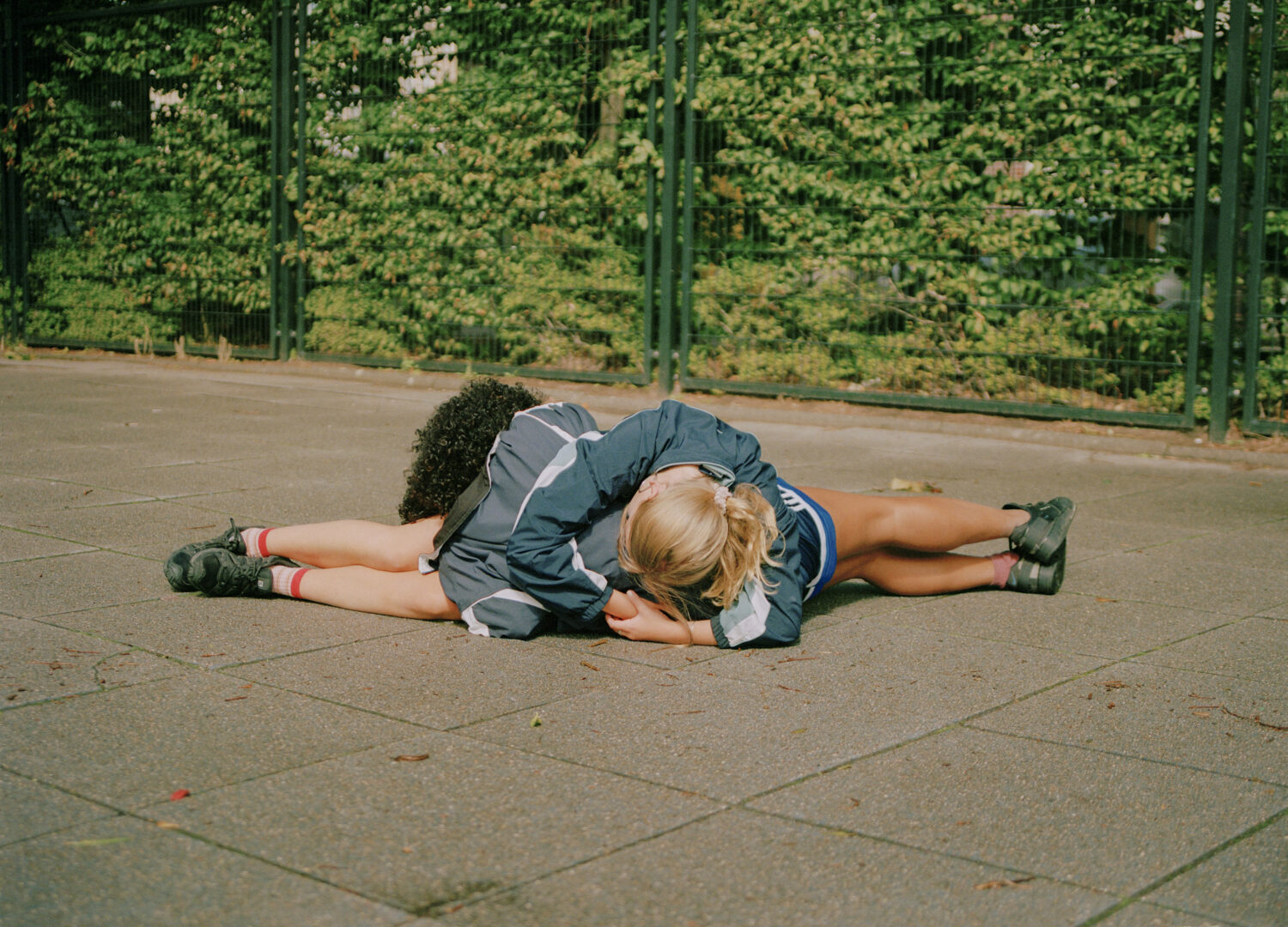
Melissa was first handed a camera by her father when she was eight. It was a disposable camera. “That one takes to like an amusement park,” she said, “That’s exactly what I did.” One school trip to the park, she became obsessed with the camera and started making her classmates pose before rosebushes, so she could take their portraits. She doesn’t recall where those photographs are now – “I’m dying to look back at them,” she exclaimed. That was the era before digicams and taking a photograph almost always meant holding one’s pose before the camera and waiting for the flash to go off.
Perhaps it was this aspect of performing for the camera which captivated her, and while studying photojournalism she didn’t find being a fly on the wall very appealing, even though she did use those techniques for many years. “I felt like I wanted to stage certain parts of the story,” she said, “I still use documentary in my work. I always feel that my work is something where both documentary and fiction photography come together. That’s exactly what I like.” In Ode, two friends lean on each other, separated by a net wall in the park. In another photograph, they seem to have collapsed alongside each other trying to physically lie on a small roundabout – a game which is all about movement, contrasted with their adult stillness.
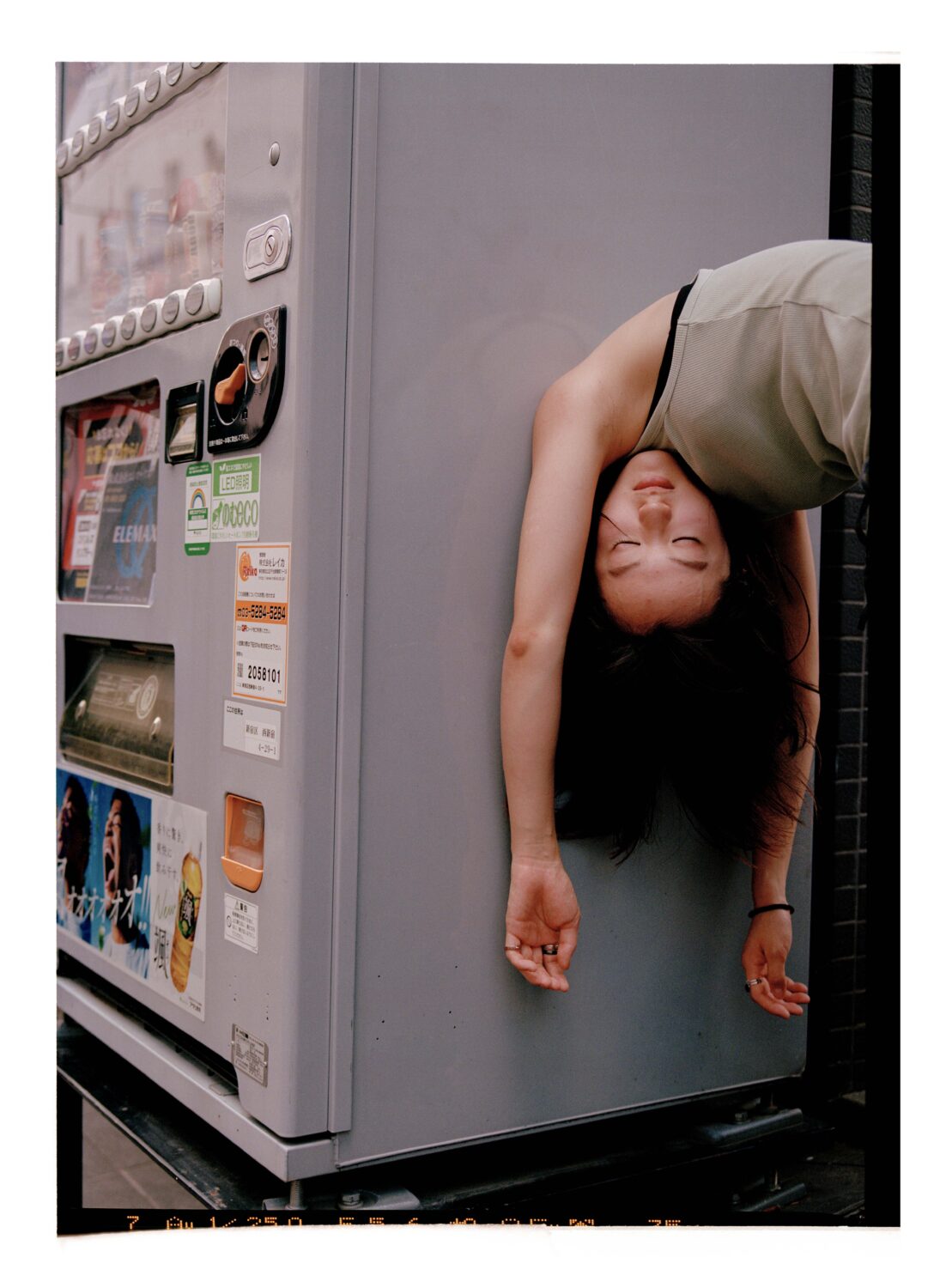
Growing up surrounded by her mother and sisters and feeling the intensity of support in her female friendships, Melissa became intrigued with visualising this invisible feminine affection. The Mean Girls narrative of competitive frenemies doesn’t suit her, and in Ode, she worked with women who were best friends in real life. She recalled a moment from her first book, The City as a Choreography, which first got her started on this visualisation where she had visited an apartment where the two girls she was photographing had just moved in together. “They were very much like their lives,” she said looking at the photograph of a jumble of hands and booted legs with a dirty blonde head peeking out, “Very intertwined. They almost did everything together. Like when you’ve got best friends, and you become one with them.”
It was like she was a third wheel, while working on Ode. “It’s more about, how do they trust me?” she said. She likes how one can see the balance in someone’s relationship in the photograph, when one tries to shield the other with their body while in a contorted position. It does take assurance to let another person into one’s personal and intimate body language with another person. “I talk a lot with the models, and I’m very loose in the way I choreograph these photos,” she reflected, “They can put in a lot of their own inputs. That also helps with trust. It’s always about finding a way to direct movement that fits with the person in front of the camera – I always anticipate how that person moves and what her training is.”
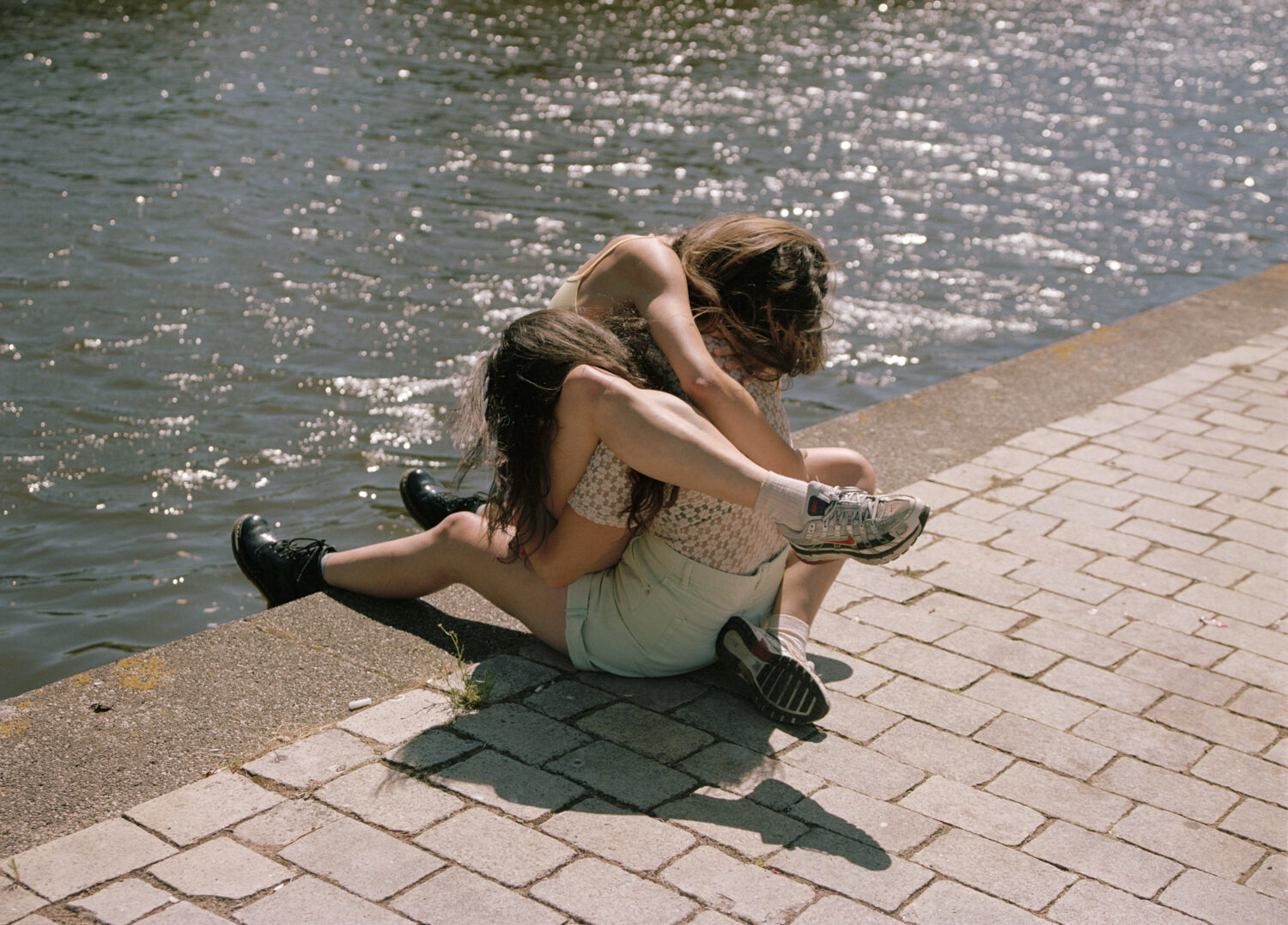
There is no possible classical movement training that Melissa hasn’t done while growing up. She did a bit of ballet, and after that modern dance and then gymnastics for a really long time. “I don’t dance anymore – I don’t feel the need to,” she said, “Every muscle in your body says something different. I really got aware of the sculptural qualities of a body, how you can bend it and what it means.” While movement remains a strong aspect in her work, she is not looking for perfection – but perhaps even the ugly. Which influences her decision to harp on faces, which are often hidden away or completely absent. “We already have to look a certain way to fit – I’m really looking for the weirdness and the uncomfortable,” she reflected.
In another photograph, a jean-clad girl curls up in a fetal position around a traffic cone, as a disembodied hand emerges from another side, almost comforting her. “I have hundreds of images of people wrapped around traffic cones,” she said, “I think this was one of the first ones I made. Traffic cones are a sign of danger – like you cannot walk here. I find it interesting she’s embracing, like it’s another person.” Melissa understands most cities are physically built for male bodies and recalls shrinking while walking the city in the night, from fear, hoping she’d go by unnoticed – something we all resort to. After she moved to the city for college, she started a series on female sculptures, where women blend into the city transforming into bricks, as they go unnoticed.
In The City as a Choreography, the city is the main character, but women take up space within it, trying to emulate its architecture through their body. “I have a photo where a girl is lying in a position where she has her arms stretched out and her legs well to the side,” she said, “That photo is called intersection, so it references a roundabout where you have four exits.” While Ode, she photographed in the Netherlands, for this work she photographed women all over.“ The public space is one of the only spaces we share with each other,” she said, “I find it very interesting to give that public space back to women – what does it mean for us that we live in a city built by men?”
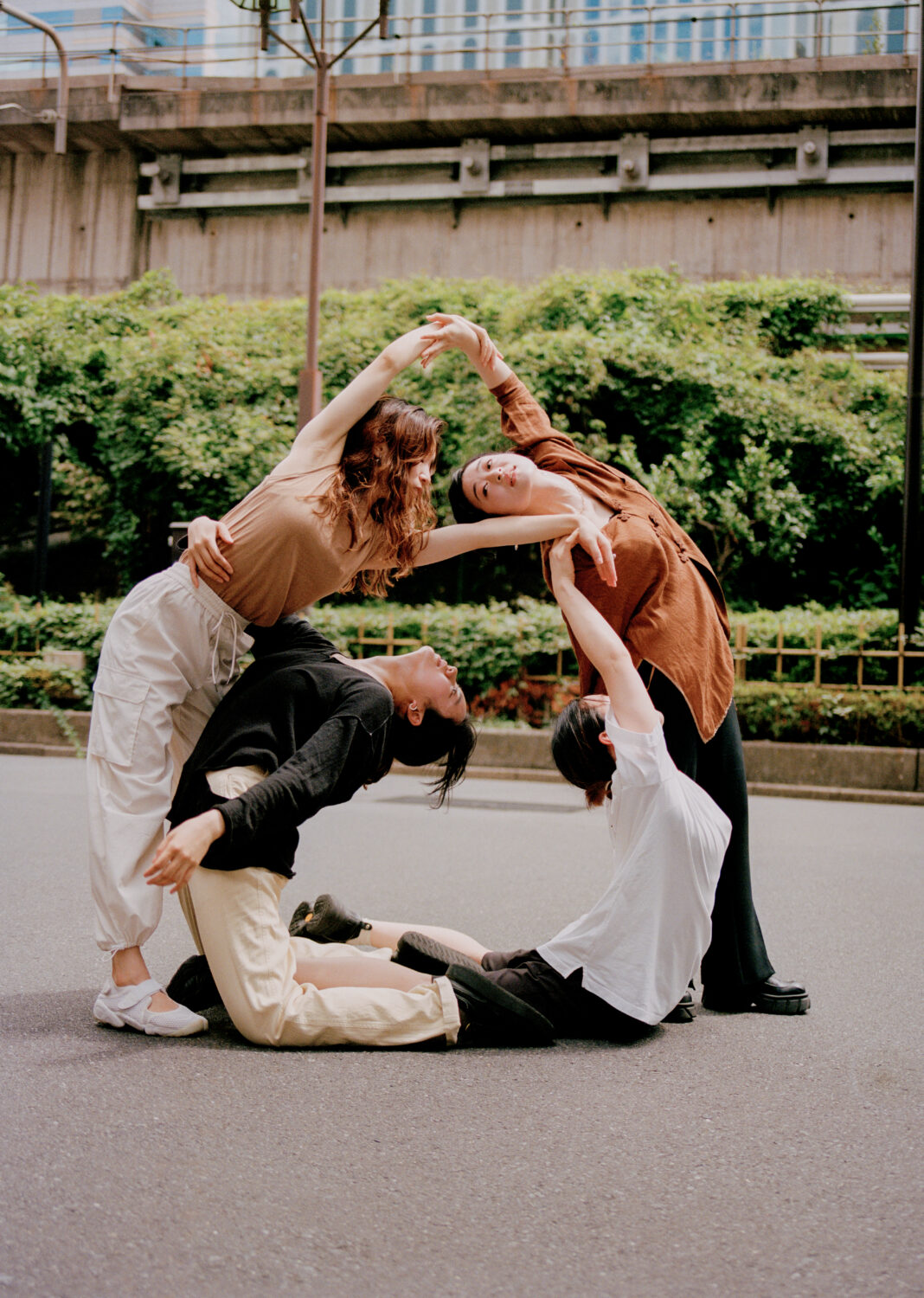
In another photograph a jacket hangs almost suspended in the air, before a bush – until we realise there’s a person inside it. “It’s another project I’m working on,” she laughed when I compared the fluidity to cats, “At this point it’s called Shape of Us, where women pose as objects.” It started when she was at a friend’s house and saw a doormat hanging over the railing and asked her to bend in the shape of the saggy doormat. “It also speaks to the way we mould ourselves to fit certain roles and expectations.” She also explores this in Ode in a photograph where two girls have their heads in washing machines – almost like a hairdryer in a salon but eerily also like ovens, with their rectangular features. Melissa was thinking more in the direction of washing being considered a woman’s task.
The element of haunted eeriness carries forth in other works of Melissa, where girls lean against a playground railing – their heads nearly touching the ground, with their long hair – a feature conventionally associated with female specters. In another photograph, two women stand before Cherry Lounge, their heads thrown back. “That photo was made in the midst of COVID,” she recalled, “You can even see lines on the streets where people have to stand – it was a very surrealistic time, and we were all maybe having a bit of an out-of-body experience.” Pursuing her fondness for strangeness in daily life is her series on boredom, referring to women not being allowed to be bored – always being assigned embroidery or some housework to keep their hands busy. “But also, boredom is a privilege,” she remarked, “In my youth I tried to escape it, as it’s also the time people start reflecting on things they might want to stay away from. When I have a shoot, I just ask someone, can I also take a photo where you’re just looking extremely bored – which is also interesting at a photoshoot, because people are always like, what are we gonna do?”
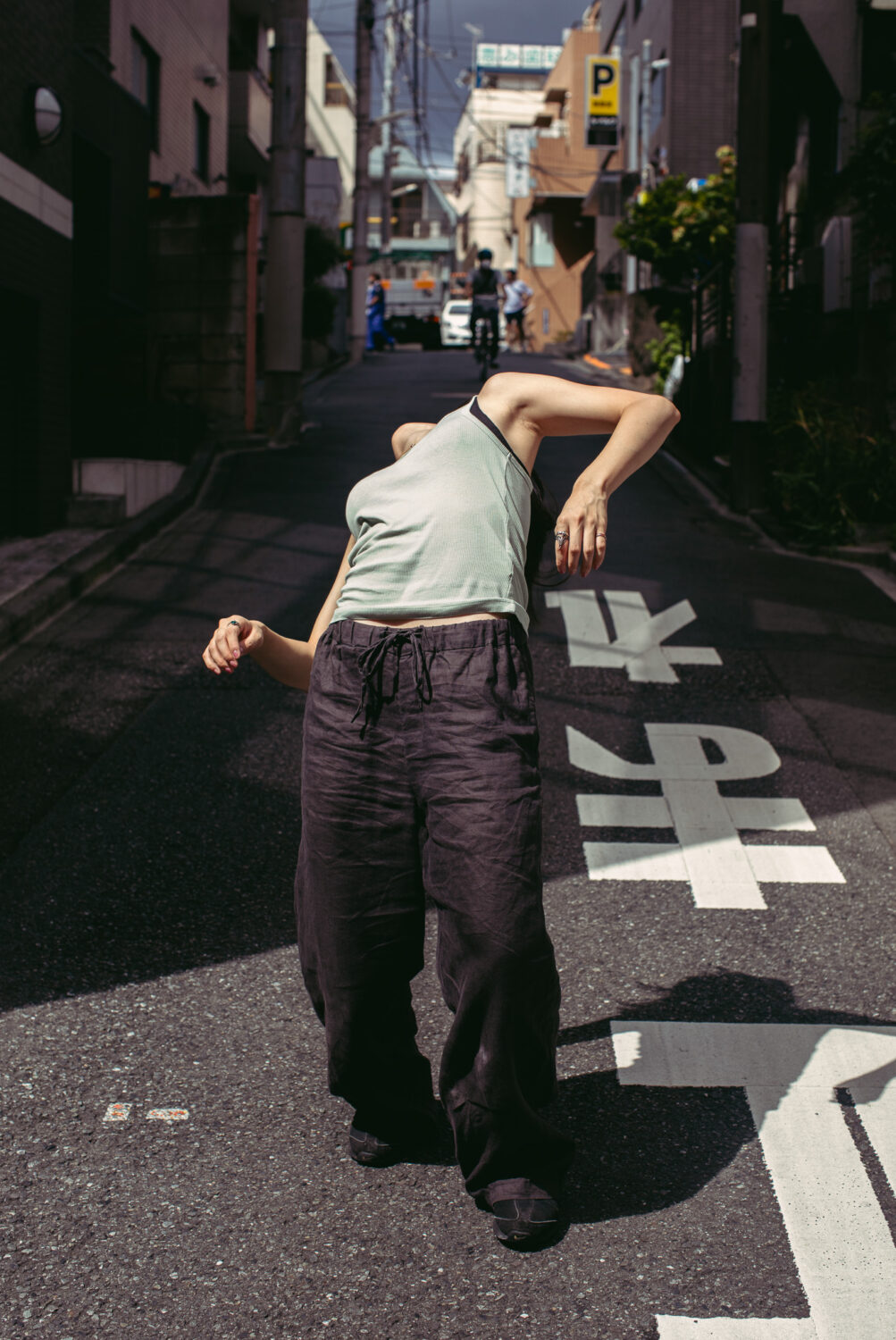
People always ask her if something really happened or if she had staged it – and that’s where the documentary aspect of her work lay, she said. “People asked me a lot if I was styling the models, or if these are their clothes,” she said, “I love working with real clothing that fits them, that they feel comfortable in. A lot of the time people wore my clothes – for instance, I wear a lot of coloured pantyhose – you see that in my work a lot.” Fashion brands work with her as they want an element of her work – when asked if she’d ever change her very strong visual language, she said it’s something that arrives from intuition. When she felt she wanted to add another layer to works which felt incomplete, she started painting over her photographs, taking oil painting glasses and spending her summers at Hama Gallery last year, who represents her. “I’ve always worked very impulsively,” she said, “I also do everything in my power to guard that and make myself fail. I don’t want to make images that I know will do well. I try to push myself and find new subjects and themes to work with – and be okay with the fact sometimes you will make things that just don’t work out.”
Feature image: Courtesy Melissa Schriek